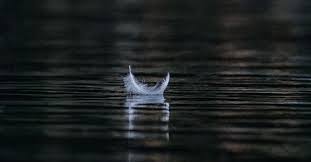What is the toughest thing for a human to achieve and the easiest that an animal does? The first time I asked this question to that dull throbbing head of mine, the answer brought a grin to the face. Quite obvious answer, isn’t it? The animal excretes anywhere and at any time! Jokes apart, this question kept haunting me for a while as sleep finally brought about the silence that my mind was so obviously seeking.
The morning brought me the answer. It was the ability to let go. Let go of what one learnt, what one was taught and what one accepted as the norm in one’s formative years. Because, till one empties the vessel (the brain), there’s no way fresh stuff can go in. And every attempt at forcing new ideas either results in an overflow or an internal duel between what one is and what one thinks that one is.

And so it was that I finally let go of my prejudices, my perspectives and my opinions. And in doing so the chatter within seemed to quieten down. It did not stop. Nonetheless, it became interspersed with thoughtlessness. For the first time I experienced total silence. The sort that one encounters moments before one falls asleep. For, I recall that at most times I wake up recalling a dream or an internal conversation but seldom recall that final thought before I enter that beautiful realm of thoughtlessness that one associates with sleep.
Thus began my tryst with my breathing. That single activity in our body which is both voluntary and involuntary. We can stop breathing (for a few seconds) but we seldom become aware of it as we journey through our days. Come to think of it, there are several activities within our bodies that happen without our knowledge all the time, but those aren’t really in our control, even for a few seconds.
What occurred during the rest of my journey on the Vipassana trail is best kept to myself as my path is my own and in no way should it influence that of another. The Enlightened One brought this up in his teachings that underscored the uniqueness of every human and ensured that no two journeys are ever the same. Suffice to say that there was a tumult in my life as I went through this journey which gave me the biggest gift of my life – Silence.
(Concluded)
Bhavatu Savva Mangalam
Share this Post[?]





